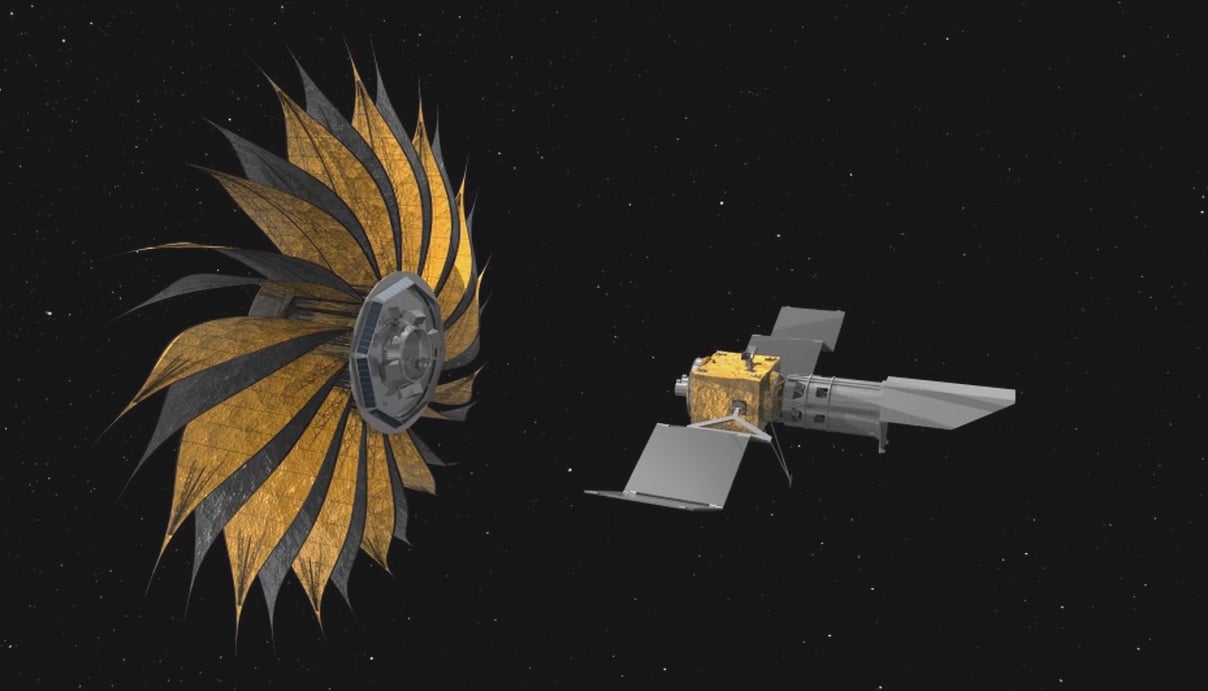For countless generations, people have looked up at the stars and wondered if life exists somewhere out there, perhaps on planets much like ours. But it has only been in recent decades that we have been able to confirm the existence of
extrasolar planets
(aka. exoplanets) in other star systems. In fact, between 1988 and April 20th of 2016, astronomers have been able to account for the existence of 2108 planets in 1350 different star systems, including 511 multiple planetary systems.
Most of these discoveries have taken place within just the past three years, thanks to improvements in our detection methods, and the deployment of the Kepler space observatory in 2009. Looking ahead, astronomers hope to improve on these methods even further with the introduction of the
Starshade
, a giant space structure designed to block the glare of stars, thus making it easier to find planets - and perhaps another Earth!
While some planets have been observed directly with telescopes (a process known as "Direct Imaging"), the vast majority have been detected through indirect methods such as the Transit Method. This method attempts to spot planets as they cross in front of the parent star's disk - during which time there will be a temporary drop in observed brightness - and can also reveal the radius of a planet and sometimes yield information on its atmosphere (with the help of spectrometers).
This method remains the most widely-used means of detection and is responsible for more exoplanet discoveries than all other methods combined. However, due to interference from other light sources, it also suffers from a substantial rate of false positives, and generally requires that part of the planet's orbit intersect a line-of-sight between the host star and Earth.
To address this, NASA is developing some key technologies that will help block out light interference so that future astronomers can detect exoplanets more easily. For instruments here on Earth, they are developing coronographs, single instruments that fit inside telescopes to block light. But looking to space, NASA's Jet Propulsion Laboratory is also developing the Starshade.
This concept calls for a giant, flower-shaped spacecraft that would be launched with one of NASA's next-generation space telescopes. Once deployed, it would fly around in front of the telescope in order to obscure the light of distant stars. This way, the light being reflected off of planets in orbit around them will be detectable, thus making it that much easier to confirm the presence of exoplanets.
The project is led by Prof. Jeremy Kasdin of Princeton University, in conjunction with the JPL and support from Northrop Grumman (which leads the mission and system design for Starshade). As Kasdin explained to Universe Today via email:
The shade, which is about the size of a baseball diamond, would be deployed as part a single mission. As the video above shows, the large shade would be mounted at the end of a space telescope - in this case, NASA's upcoming
Wide Field Infrared Survey Telescope
(WFIRST) - and then detaches and deploys to a distance of several thousands kilometers in front of it.
Such a large shade operating at such a long distance from of its paired telescope is essential when dealing with distant stars."Because stars are so far away the angular distance between the planet and star is quite small," said Kasdin, "requiring a very large starshade (20 to 50 meters in diameter) flying very far from the telescope (up to 50,000 km). Nevertheless, many astronomers believe this is the best technology to detect an Earthlike planet in the near future, a belief aided by the fact that few special requirements are placed on the telescope."
Paired with other instruments, like spectrometers, devices like the Starshade will not only allow astronomers to be able to spot planets more easily, but also obtain information about their atmospheres. By studying their chemical compositions - i.e. looking for the presence of oxygen/nitrogen, water vapor, etc. - we would be able to tell with a fair degree of certainty whether or not life exists on them.
The Starshade technology is one of the top candidates for a flagship-level mission in the next decade and a top
Astro2010
priority for technology development. In addition to working with WFIRST, it is possible it will be paired with missions like the
Transiting Exoplanet Survey Satellite (TESS)
and the
James Webb Space Telescope
.
"We are hoping that a starshade capable of Earth detection will be recommended to fly with the upcoming WFIRST mission," Kasdin added, "allowing the first image of an Earth in the next decade."
Further Reading: JPL News
 Universe Today
Universe Today
